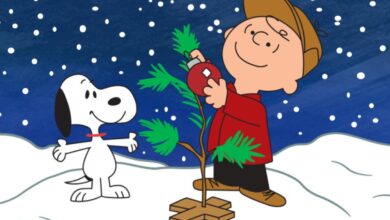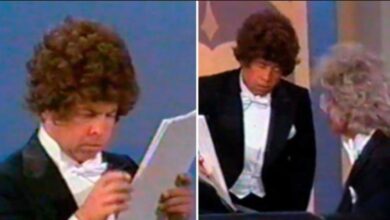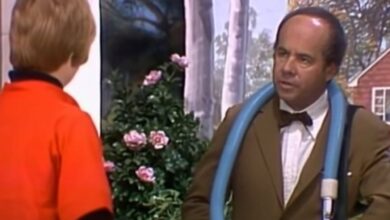Jimmy Dean’s “Big Bad John” Breaks the Mold and Becomes a Monumental Crossover Smash in 1961
Released in September 1961, Jimmy Dean’s “Big Bad John” didn’t just climb the charts—it exploded onto the American cultural landscape like the dynamite that ends the song’s story. With its gravelly spoken-word delivery and larger-than-life subject, the track shot straight to No. 1 on the Billboard Hot 100 and the Hot Country Singles chart, holding the top spot on both for five consecutive weeks. It was a rare feat in an era when country and pop rarely overlapped so forcefully. This unusual tale of stoic heroism in a mine shaft captivated a nation and reshaped expectations for what a hit record could sound like.
Before he became a household name, Jimmy Dean had already built a solid reputation as a country singer and television host. Born in Olton, Texas, in 1928, Dean grew up in humble surroundings, working hard from a young age and learning music by ear. He played guitar and accordion, and his natural charisma soon propelled him onto national radio and television. By the late 1950s, he was hosting “The Jimmy Dean Show,” and his wholesome charm, down-home manner, and booming baritone helped him connect with both rural and urban audiences. But it wasn’t until “Big Bad John” that he truly became a musical force.
The story behind “Big Bad John” is as surprising as the song itself. Dean reportedly jotted down the lyrics on a flight to Nashville, inspired by a co-worker from his television crew named John, who had a reputation for being big, silent, and dependable. Co-written with Roy Acuff’s nephew Roy Buff, the song told a cinematic story in just a few verses—about a mysterious giant of a man who dies heroically saving fellow miners from a collapsed shaft. Dean’s original recording was meant as a B-side filler, but radio DJs and audiences latched onto its gripping narrative and distinct sound almost immediately.
The production of “Big Bad John” was just as unconventional as its structure. Unlike most country songs of the era, which leaned on twangy guitars and vocal harmonies, “Big Bad John” was built around a minimalist backdrop of ominous percussion and a male chorus chanting the title in the background. The producer, Don Law, chose to keep the instrumentation stark, letting Dean’s deep, resonant narration carry the story forward. The result was more spoken-word performance than conventional song—what we might now call Americana or country noir. Its stripped-down power made the imagery all the more vivid.
The public reception was immediate and overwhelming. “Big Bad John” soared to No. 1 on both the country and pop charts, a rare crossover achievement at the time. It earned Dean a Grammy Award for Best Country & Western Recording in 1962 and sold over a million copies in just a few months. The song stayed on the Billboard Hot 100 for 15 weeks and also found success internationally, especially in the UK and Australia. Its blend of country storytelling and mainstream appeal marked a turning point not just for Dean, but for country music’s place in American popular culture.
Culturally, “Big Bad John” landed during a time of shifting American identity. The early 1960s were filled with Cold War anxieties and working-class valor, and the song’s subject—a quiet, rugged hero who sacrificed himself for others—resonated deeply with listeners. It wasn’t just a song; it was an ode to the forgotten laborer, the everyday man with extraordinary courage. Its success helped soften the public’s perception of country music, which had often been viewed as too regional or unsophisticated for national audiences.
For Jimmy Dean, the success of “Big Bad John” launched a new phase of his career. Already a rising television personality, the song catapulted him into mainstream stardom. He would go on to host multiple national shows, star in commercials, and even appear in films. The success also granted him the freedom to explore more creative ventures, including launching his famous Jimmy Dean sausage brand in the late 1960s. Without “Big Bad John,” Dean might have remained a regional entertainer; with it, he became a household name.
The influence of “Big Bad John” echoed across genres. It opened the door for other story-based country hits with cinematic narratives, inspiring artists like Johnny Cash, Tom T. Hall, and Marty Robbins to dive deeper into storytelling through song. Its spoken-word style also prefigured the narrative traditions of outlaw country and the darker Americana ballads of later decades. Even in rock music, echoes of Dean’s deadpan delivery can be found in Lou Reed’s monotone vocals and Bruce Springsteen’s blue-collar tales.
Not surprisingly, “Big Bad John” inspired a host of covers and even a few comedic parodies. The most notable among them was by Dottie West, who recorded an answer song titled “My Big John,” offering a female perspective to the tale. Comedian Phil Harris also released a satirical take, “The Return of Big Bad John,” while Dean himself followed up with a semi-sequel titled “The Cajun Queen,” adding to the song’s mythical lore. Each iteration only cemented the original’s impact on pop culture.
Around the time of the song’s release, Dean was also enjoying personal success. His television show was gaining traction, and he was being courted for acting roles. The song’s popularity added credibility to his musical talents and deepened his fan base across age groups and regions. Unlike many of his contemporaries, Dean managed to straddle multiple entertainment platforms with ease—thanks in large part to the magnetism he displayed through “Big Bad John.”
More than six decades later, “Big Bad John” continues to be celebrated as one of country music’s most iconic narrative songs. It’s still played on classic country radio, featured in documentaries, and referenced in discussions of music that helped shape the American identity. The lyrics have been studied in schools and used in motivational talks about quiet leadership and self-sacrifice. It remains a benchmark for storytelling in popular music.
Musically, the track demonstrated how minimalism could create maximum impact. In an era leaning into elaborate orchestration and polished production, Dean’s gravelly voice and sparse arrangement proved that raw narrative power could drive a hit. It helped validate spoken-word approaches in mainstream music and paved the way for similar experiments across genres in the decades that followed.
Jimmy Dean’s legacy was forever altered by the success of “Big Bad John.” While he had many other accomplishments—including a thriving food empire and a respected television career—it is this song that people remember most. Its towering subject and humble delivery embodied everything Dean stood for: strength, humility, and quiet determination. He passed away in 2010, but not before receiving accolades that acknowledged both his musical and entrepreneurial achievements.
Ultimately, “Big Bad John” is more than just a country song—it’s a cultural artifact. It captured a moment in American history when the values of grit, bravery, and silent heroism held deep resonance. It made Jimmy Dean a legend not by shouting his virtues, but by speaking them softly, in a voice deep as a mine shaft and just as unforgettable.





